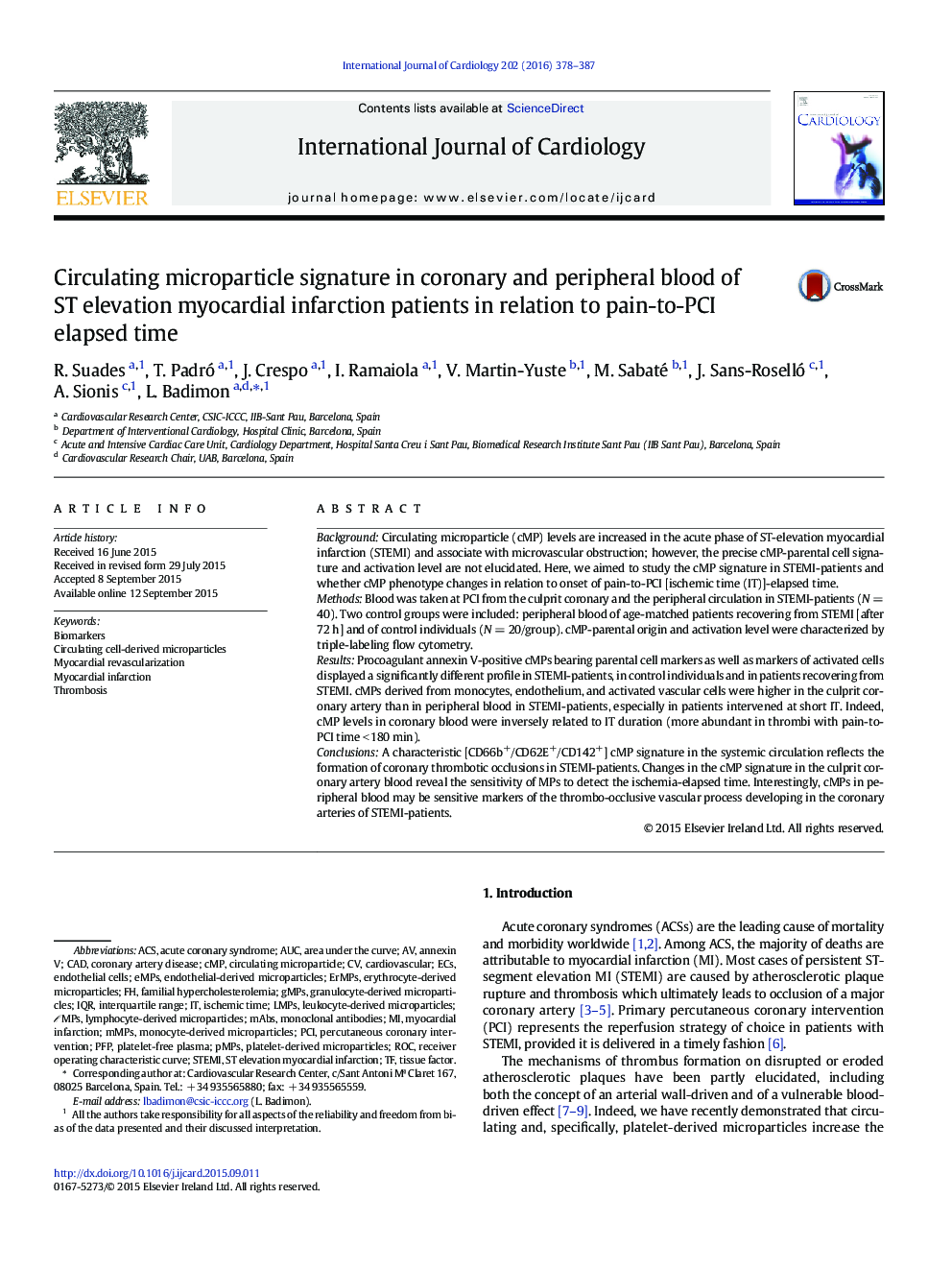| کد مقاله | کد نشریه | سال انتشار | مقاله انگلیسی | نسخه تمام متن |
|---|---|---|---|---|
| 5965378 | 1576149 | 2016 | 10 صفحه PDF | دانلود رایگان |

- STEMI patients show changes in circulating microparticle (cMP) signature.
- Prothrombotic and proinflammatory cMPs vary both at systemic and coronary levels.
- The cMP intracoronary profile associates to duration of pain-to-PCI ischemic time.
- Peripheral cMPs associate to the number of diseased vessels.
- cMPs may be considered as sensitive prognostic multi-biomarkers in STEMI.
BackgroundCirculating microparticle (cMP) levels are increased in the acute phase of ST-elevation myocardial infarction (STEMI) and associate with microvascular obstruction; however, the precise cMP-parental cell signature and activation level are not elucidated. Here, we aimed to study the cMP signature in STEMI-patients and whether cMP phenotype changes in relation to onset of pain-to-PCI [ischemic time (IT)]-elapsed time.MethodsBlood was taken at PCI from the culprit coronary and the peripheral circulation in STEMI-patients (NÂ =Â 40). Two control groups were included: peripheral blood of age-matched patients recovering from STEMI [after 72Â h] and of control individuals (NÂ =Â 20/group). cMP-parental origin and activation level were characterized by triple-labeling flow cytometry.ResultsProcoagulant annexin V-positive cMPs bearing parental cell markers as well as markers of activated cells displayed a significantly different profile in STEMI-patients, in control individuals and in patients recovering from STEMI. cMPs derived from monocytes, endothelium, and activated vascular cells were higher in the culprit coronary artery than in peripheral blood in STEMI-patients, especially in patients intervened at short IT. Indeed, cMP levels in coronary blood were inversely related to IT duration (more abundant in thrombi with pain-to-PCI time <Â 180Â min).ConclusionsA characteristic [CD66b+/CD62E+/CD142+] cMP signature in the systemic circulation reflects the formation of coronary thrombotic occlusions in STEMI-patients. Changes in the cMP signature in the culprit coronary artery blood reveal the sensitivity of MPs to detect the ischemia-elapsed time. Interestingly, cMPs in peripheral blood may be sensitive markers of the thrombo-occlusive vascular process developing in the coronary arteries of STEMI-patients.
Journal: International Journal of Cardiology - Volume 202, 1 January 2016, Pages 378-387